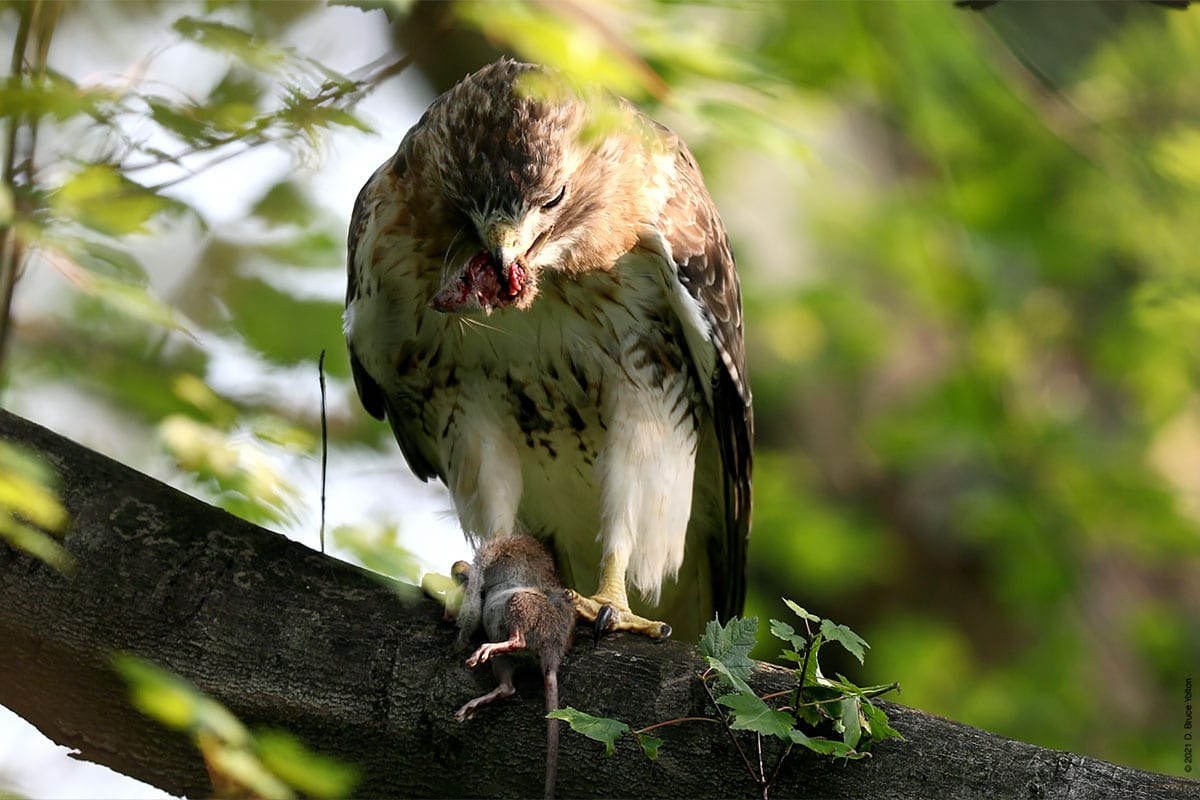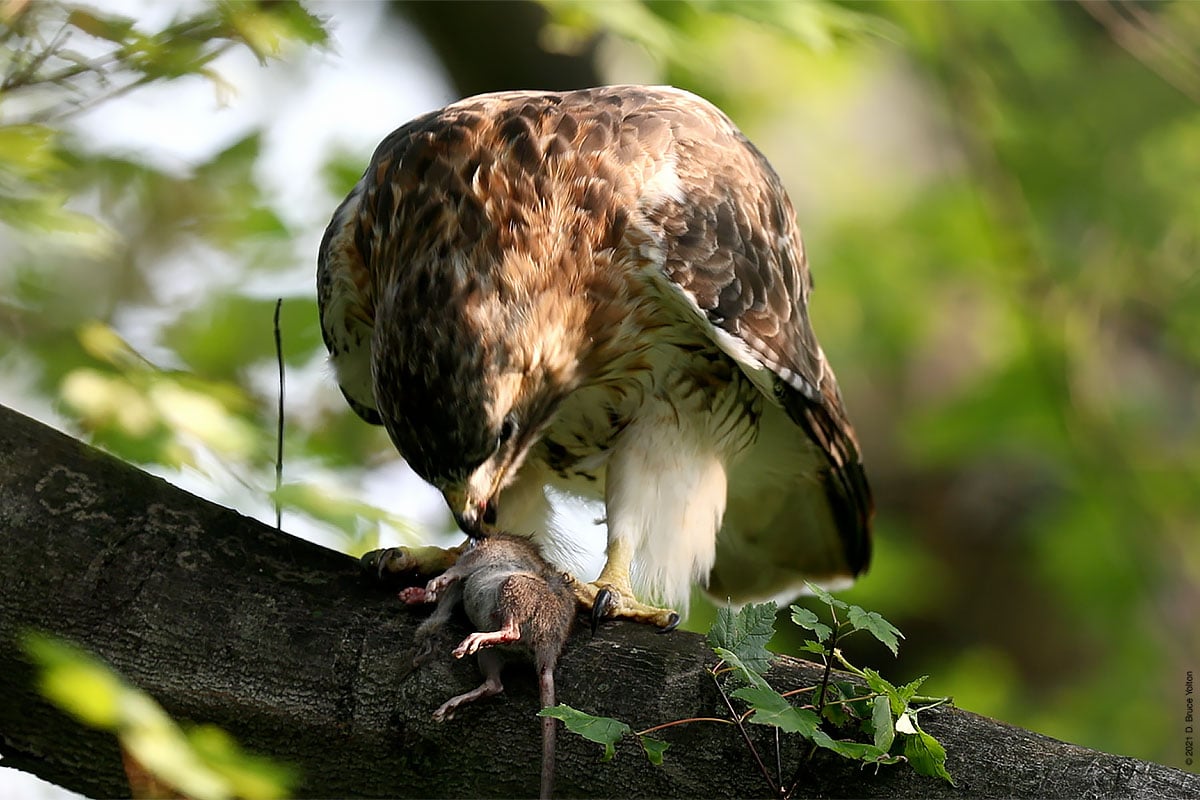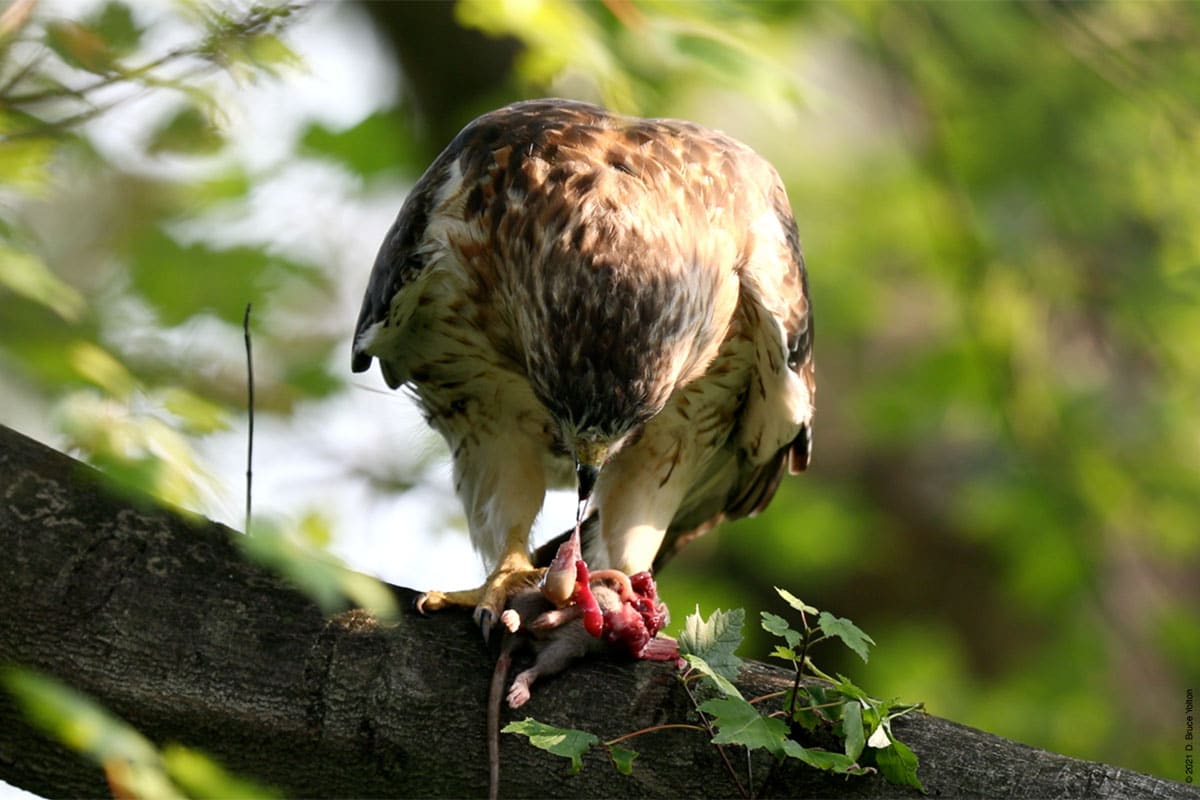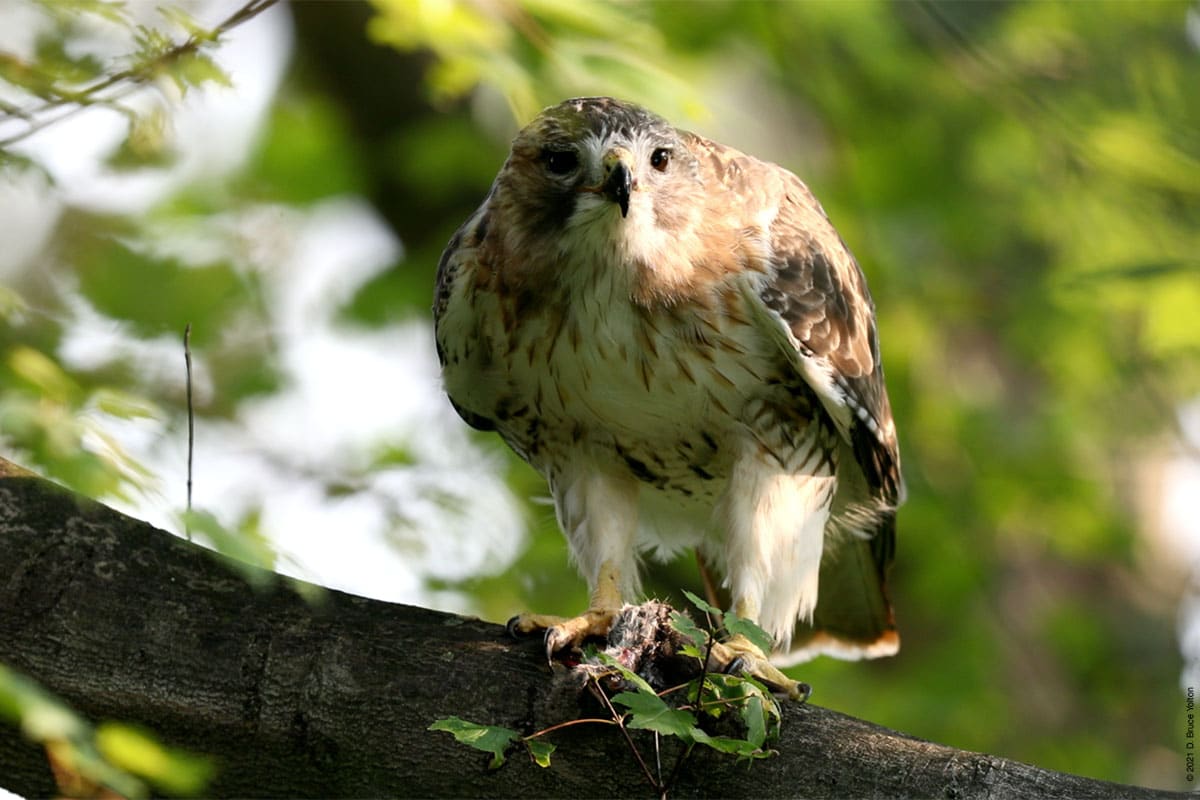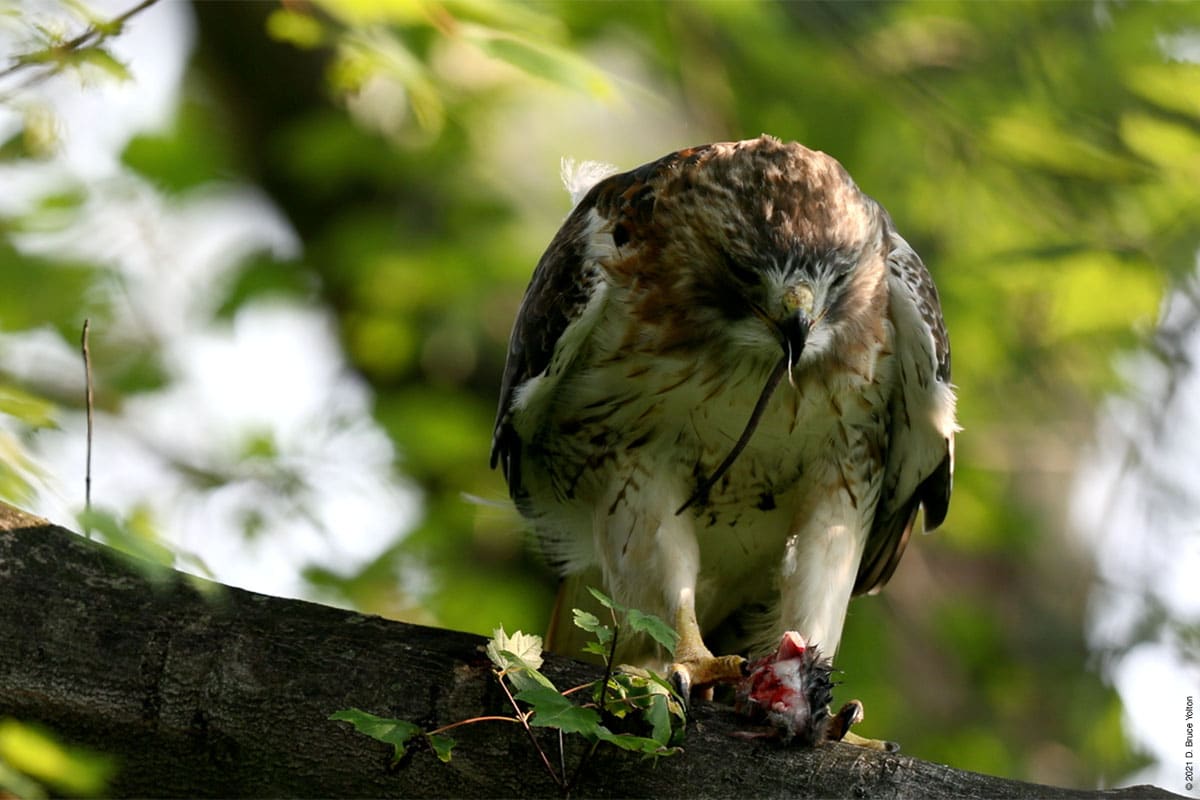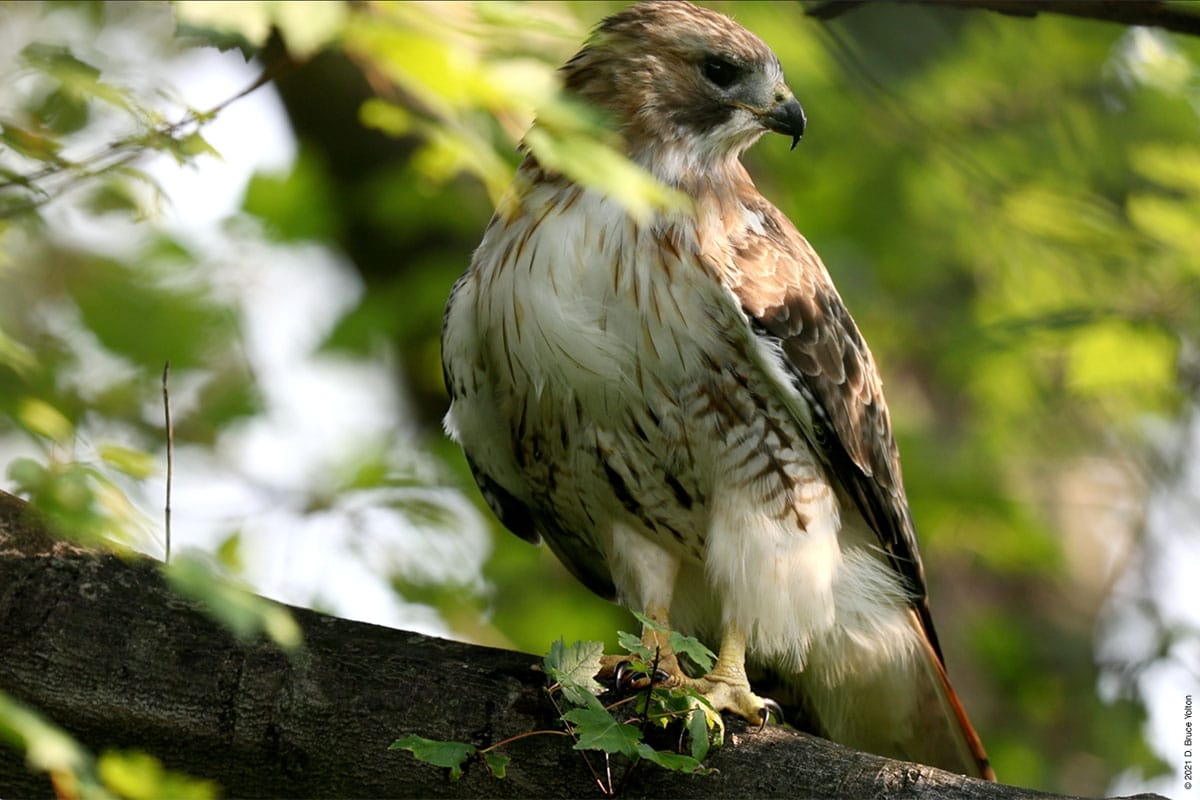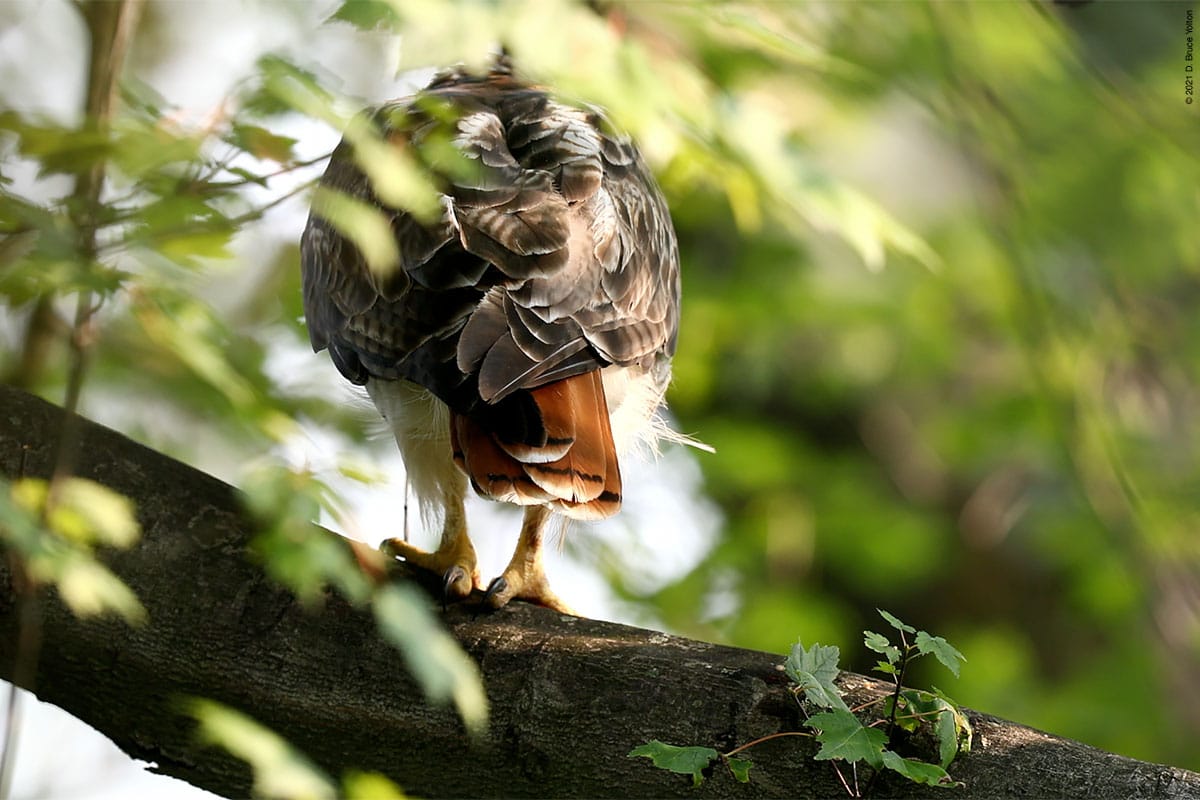On Sunday morning, Pale Male waited patiently across from the Maintence Bathrooms and gently dropped 20 feet to catch a brown rat. He then ate the rat in about 8 minutes.
Rodents have overwhelmed the Ramble in Central Park this year, due to the careless overfeeding of birds, rodents and raccoons. The birds being fed are primarily non-native species of House Sparrows, Rock Pigeons and European Starlings and rodents, be are both Gray Squirrels and Brown Rats. I’ve been keeping track of those who feed birds in such a small area and I estimate that at over a gallons of seed, bread and peanuts is now thrown on the ground each day.
All of this food has created an environmental collapse of the Ramble. The rodents are competing against ground and cavity roosting and nesting native birds. And the non-native species of birds are also competing against our native species.
Using snare traps or non-invasive methods to kill the brown rats, such as dry ice, could be used safely but with all of the food being distributed in the Ramble, the rats will quickly return.
As my mother said, “God help us from do gooders”. The solution to this problem is going to be a tough battle, as those doing the feeding believe they are helping the birds. I hope the Central Park Conservancy along with the Urban Park Rangers and the Park Department’s Wildlife unit can work to educate the public.
Just adding for signage, along with educational materials would be helpful. Years ago, city parks had signs that said “Feed a Pigeon, Feed a Rat”. And in 2017, there was a campaign to discourage the feeding of wildlife. The wildlife unit should be encourage to expand their website to include a dedicated landing page about why feeding of wildlife isn’t appropriate, and signage should be expanded in Central Park with QR codes pointing park patrons to these website resources.
It needs to be noted that the bird feeding station in the Evodia Field managed with loving care by the artist, Frances Lee Rogers is not part of the rodent problem. These feeders are carefully designed to provide food during the colder season, for over wintering native birds, when natural foods are tougher to find. Birds flock to these feeders especially when snow or ice covers their natural foods and temperatures fall to extreme lows. These feeders are carefully managed to limit the amount of seed that falls onto the ground.
